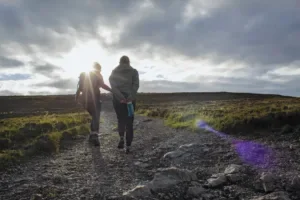Ice age climate change and ancient flooding–but not barriers created by rivers–may have promoted the evolution of new insect species in the Amazon region of South America, a new study suggests.
The Amazon basin is home to the richest diversity of life on earth, yet the reasons why this came to be are not well understood.
A team of American and Brazilian researchers, led by former graduate student Dr. Scott Solomon of The University of Texas at Austin, studied three species of leafcutter ants from Central and South America to determine how geography and climate affect the formation of new species.
Their results will be published July 23 in the journal PLoS ONE.
In order to evaluate the three most popular hypotheses as to why there’s such a diversity of species in the Amazon, Solomon collected genetic samples from 194 leafcutter ant colonies scattered throughout the Amazon basin.
“Scott is the first to thoroughly test the importance of geographic barriers for the origin of insect biodiversity in South America, using the leafcutter ants as a model system,” says study co-author Ulrich Mueller, the W.M. Wheeler Lost Pines Professor of Integrative Biology and Solomon’s graduate adviser. “He’s following in the footsteps of Alfred Wallace, the pioneering naturalist who, along with Darwin, first noted that many species are found in geographic proximity to closely related species.”
By combining analysis of the genetic information with knowledge of the species’ current ranges and “paleodistribution” models of what the species’ ranges were during the last ice age, Solomon, Mueller and their colleagues found support for both the “Pleistocene refugia hypothesis” and the “marine incursion hypothesis.”
The genetic and the climatic results, however, both suggested that the “riverine barrier hypothesis” cannot explain insect biodiversity.
The “Pleistocene refugia hypothesis” posits that a major decrease in rainfall during the last ice age (about 21,000 years ago) affected where many Amazonian species, such as leafcutter ants, were able to survive. What was initially a single species would evolve into multiple, distinct species after being separated into isolated “refugia,” each with its own set of selective environmental pressures.
The “marine incursion hypothesis” suggests that some 10-15 million years ago, a combination of tectonic events and elevated sea levels flooded much of the Amazon Basin in salty or brackish water. This would have caused higher elevation regions, like the slopes of the Andes Mountains, to become like islands, in which species were able to evolve independently from species on other “islands.”
The “riverine barrier hypothesis” suggests that tropical rivers serve as barriers to gene flow for terrestrial organisms. These rivers, which are wide and numerous in Amazonia, would promote divergence of populations restricted to either side.
According to the study, however, even the Amazon river–which at places is nearly two miles wide–has not kept winged leafcutter ant queens and males from flying across it.
“It is interesting that Amazonian rivers acts as barriers to some birds, but these ants are apparently able to cross them,” says Solomon.
The results, says Mueller, don’t resolve all the mysteries of tropical biodiversity. It’s possible, for instance, that both ancient flooding of the Amazon basin as well as more recent, ice age climate change contributed to speciation, and even both factors don’t explain why tropical insect diversity exceeds temperate insect diversity by so much.
“The results don’t solve the great puzzle of why tropical insect diversity exceeds temperate insect diversity by several orders of magnitude,” says Mueller, “but they are significant, and they point to some key processes that other researchers will now test also on other organisms.”
The research was conducted at The University of Texas at Austin and the State University of São Paulo in Brazil.
Solomon is a National Science Foundation International Research Fellow at the Smithsonian Institution.
Other authors on the paper include: Mauricio Bacci Jr., Joaquim Martins Jr., and Giovanna Gonçalves Vinha of the State University of São Paulo, Brazil.



